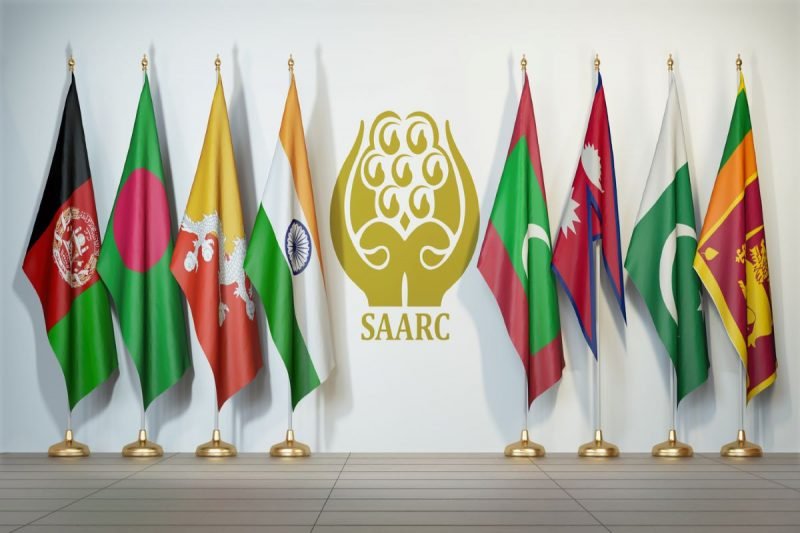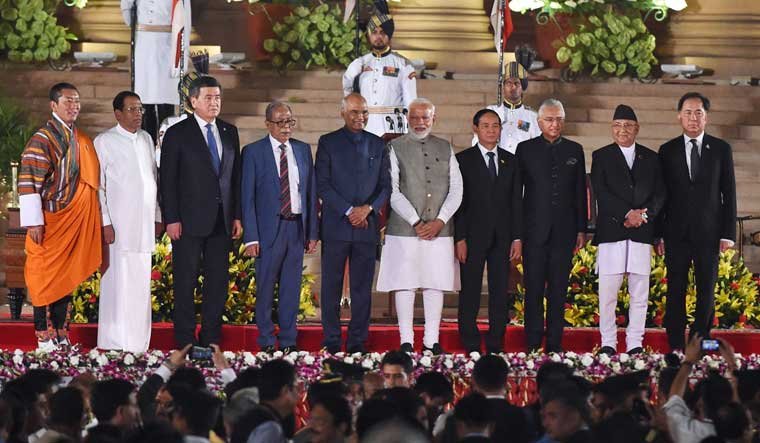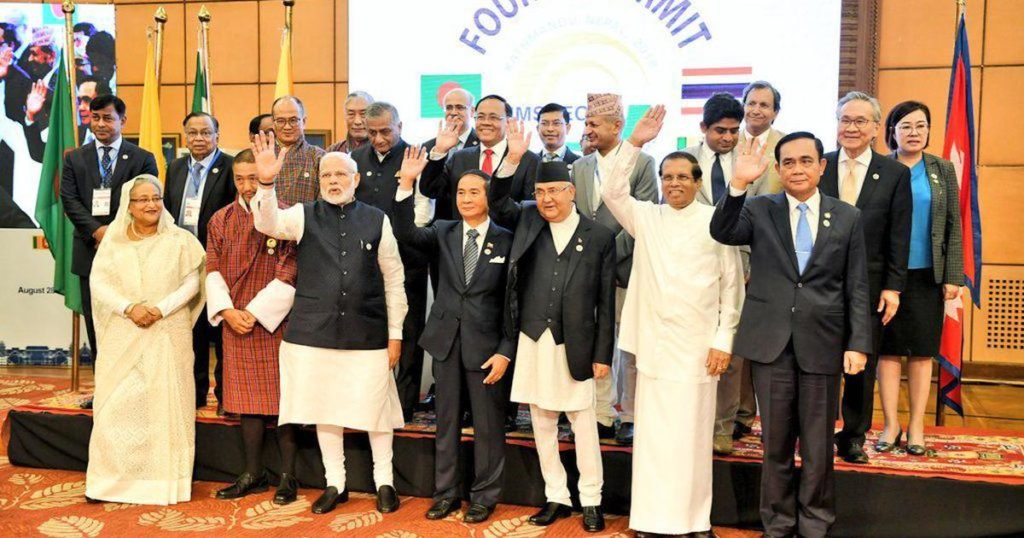Challenges to the regional institutions in South Asia

Introduction and historical background
The history of the South Asian Association for Regional Cooperation is a very elaborate one. The organization was established in the year 1985 with the adoption of the charter by the heads of state of seven different countries which were Bhutan, Maldives, India, Nepal, Sri Lanka, Bangladesh and Pakistan. If one were to observe the geographical locations of the member countries of SAARC, it can be easily comprehended that SAARC countries share a lot of borders via land and also possess a very rich history of trade and commerce in the region.
In the pre-independence era, it was seen that countries such as modern-day Pakistan, India and Bangladesh had an extensive trade network which subsequently resulted in the prosperity of the region at the time. However, following the respective independence of the countries from the colonial regime, these countries adopted their own unique strategies for trade and commerce which led the countries to drift apart from one another. This in itself is an irony, because the South Asian region is one of the most interconnected regions in the world with a rich history in intrastate trade, however according to the World Bank (WB) reports, the South Asian region remains one of the least integrated regions of the world.
The significance and the causes for the decline of SAARC
As stated earlier, SAARC is one of the least connected organisations in the world in terms of regional trade amongst the member countries. One begs to ask a very significant question as to why SAARC which started off as a brilliant venture in the year 1985, has arrived at its inevitable decline. One of the most viable answers to this query can be found in the political instability within the relations between member countries such as India and Pakistan.
During its early stages of evolution, the SAARC saw a lot of progress and development as an association. In the year 1993 in particular there was an increase in trade negotiations amongst the member countries preliminarily due to the signing of a preferential trade agreement which resulted in the bolstering of the respective economies as well. Countries like India had adopted several policies in order to reduce tariffs on favoured nations by almost 50% on around a hundred and six commodities. Bangladesh reduced tariffs by 10% on around Twelve commodities, and Pakistan managed to reduce tariffs by 15-20% on almost Thirty-Five commodities. This was during the course of the South Asian Preferential Trade Agreement or commonly referred to as the SAPTA (Chaturvedi, Hussain, Nag: 2017).
By the year 2006, member states of SAARC adopted a more nuanced and refined approach toward trade and multilateral cooperation by converting the South Asian Preferential Trade Agreement (SAPTA) into the South Asian Free Trade Agreement (SAFTA). With the advent of the South Asian Free Trade Agreement, there was economic liberalisation among the member countries with respect to intra-state trade. The reduction of tariff rates was supposed to be 20% in the First Phase, which was in the year 2007 and in the following phases the tariffs had to be reduced accordingly till the year 2012. This was for major countries such as Pakistan, India and Sri Lanka. However, for the other members within SAARC, an additional three years was allowed (Chaturvedi, Hussain, Nag: 2017).
Although the South Asian Free Trade Agreement should have been the threshold for better economic integration and multilateral trade cooperation in the South Asian region, it did not reach its estimated expectations. The reluctance of member states to appear for summits conducted in Pakistan following terrorist attacks and political animosity among member countries have hindered the development of the SAFTA.
Such a contestation is unhealthy in the context of any organization, especially if one considers the fact that the countries that have unstable relations with one another are powerful regimes. In the case of SAARC, the political tensions and border disputes between India and Pakistan has troubled the internal balance of the SAARC. India refusing to join the SAARC summit at Islamabad, following the terrorist attacks by Pakistani militants in the year 2016 is one such example.

Alternatives for Regional Integration in South Asia
The question now arises as to whether or not SAARC can be revived? The analysis made before proves otherwise. The gradual decline and inevitable demise of SAARC is however paving way for another potentially powerful economic cooperation, which is the Bay of Bengal Initiative for Multi-Sectoral Technical and Economic Cooperation or commonly called as the BIMSTEC. The BIMSTEC was first formed as an economic corridor among nations such as Bangladesh, India, Myanmar, Sri Lanka and Thailand. Later on, countries such as Nepal and Bhutan joined the economic cooperation, hence requiring a change in the name of the organization. With the advent of the Free Trade Agreement within BIMSTEC and a stand against cross border terrorism, the BIMSTEC is now in a position to surpass the levels of integration that was once found during the dawn of SAARC. The relentless opposition of the BIMSTEC countries against terrorism and the compromise made by the member countries for the setting up of better economic integration has propelled the BIMSTEC in to a dominant position within the South Asian region.
Although the BIMSTEC shows promising signs at the moment, only time will tell if this cooperation will reach the economic prowess and integration of other unions such as the EU. One of the primary ways in which the BIMSTEC can maximize its internal trade is by giving more emphasis on the geographical proximity between the member countries. Most of the BIMSTEC countries share borders among each other. The regional integration of countries such as Myanmar, Bangladesh, Bhutan, Nepal and India on the basis of their economic wants can enable a better contestation against the greater economic power of China.
However, it is to be noted that one of the most predominant challenges to the BIMSTEC is posed by China itself. The failure of countries like Sri Lanka and Nepal to associate with India has put them in dire economic conditions. This is particularly true with regard to Sri Lanka, which is in a very threatening crisis with respect to receiving basic amenities. India should capitalize on such opportunities in providing aid with the help of BIMSTEC in order to further strengthen the organization. The failure of India to act is being exploited by nations like China which is coming forward in order to provide financial aid and support for Sri Lanka. These challenges must be overcome in order for there to be formidable economic cooperation in the South Asian region, and this seems to be the only way in which India can in some way counter the economic supremacy instigated by China.

What lies ahead for the South Asian region?
The impact that the BIMSTEC has had in the South Asian region cannot be over exemplified, yes it has severed beyond the purpose for which it was initially established, but however, the question for the hour is if that is enough from a regional and so-called Multi-Sectoral cooperation. In the analysis that was made it can be presumed that the performance of the BIMSTEC is quite underwhelming to the noise that surrounds its functioning. Cross-Border terrorism is one of the most significant issues that has been raised in the BIMSTEC as of now however one must analyse as to what is the extent to which the member countries within the BIMSTEC contribute in order to counter-terrorism, it can be found that beyond the surface level of addressing the issue of terrorism none of the countries contributes to bringing forward measures to counter the same.
This has and will always be the biggest failure of regional organizations in the South Asian regions. There are summits that are conducted, conferences that are held, and that too on an annual basis but what is the end outcome of the same? It is worth noting that the success of organizations such as the EU is the factor of trust among the member countries. The mistrust within the South Asian region between nation-states and the policies implemented by the Chinese Republic in accordance to the ‘Theory of Games’ as enunciated in the works of Neumann and Morgenstern can essentially explain the absence of an economically integrated South Asia.
China has risen to the ranks of being a dominant player in the South Asian region with regards to the influence that it holds over countries such as Nepal, Myanmar and Sri Lanka showing the calculative measures applied in the region. The only way in which such countries can trust regional organizations in the South Asian region is by reassurance. Economic assistance, aid and amnesties given during the periods of crisis, not as individual countries but as part of the organization is a good place to start. Unless and until such a factor of trust is implemented the success of regional organizations in the South Asian region will remain obsolete.
REFFERENCES
Chaturvedi, P., Hussain, Z., & Nag, B. (2015). SAARC Geopolitics and Trade. South Asian Survey, 22(1), 78–106. https://doi.org/10.1177/0971523117708963
Chakma, B. (2018). SAARC and region-building: is South Asia a region? Journal of the Indian Ocean Region, 14(2), 189–205. https://doi.org/10.1080/19480881.2018.1478272
Morgenthau, H. J. (1973). Politics among nations. Alfred A. Knopf.
Von Neumann, J., & Morgenstern, O. (2007). Theory of Games and Economic Behavior, Princeton University Press.


















